Based on Your Reading:
Get Your Free Mesothelioma Guide

Find a Top Mesothelioma Doctor

Access Help Paying for Treatment

Today, though successful lawsuits helped reveal the link between asbestos and cancer decades ago, traces of asbestos have been found in products consumers still use regularly. The toxic mineral has appeared in a variety of consumer products for children, adults and the home.
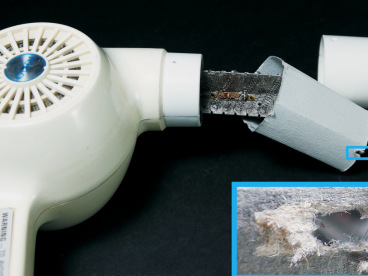
Written by Michelle Whitmer • Edited By Walter Pacheco • Scientifically Reviewed By Sean Fitzgerald, PG
The Mesothelioma Center at Asbestos.com has provided patients and their loved ones the most updated and reliable information on mesothelioma and asbestos exposure since 2006.
Our team of Patient Advocates includes a medical doctor, a registered nurse, health services administrators, veterans, VA-accredited Claims Agents, an oncology patient navigator and hospice care expert. Their combined expertise means we help any mesothelioma patient or loved one through every step of their cancer journey.
More than 30 contributors, including mesothelioma doctors, survivors, health care professionals and other experts, have peer-reviewed our website and written unique research-driven articles to ensure you get the highest-quality medical and health information.
My family has only the highest compliment for the assistance and support that we received from The Mesothelioma Center. This is a staff of compassionate and knowledgeable individuals who respect what your family is experiencing and who go the extra mile to make an unfortunate diagnosis less stressful. Information and assistance were provided by The Mesothelioma Center at no cost to our family.LashawnMesothelioma patient’s daughter


Whitmer, M. (2024, March 25). Asbestos in Home Goods and Toys. Asbestos.com. Retrieved April 19, 2024, from https://www.asbestos.com/products/consumer/
Whitmer, Michelle. "Asbestos in Home Goods and Toys." Asbestos.com, 25 Mar 2024, https://www.asbestos.com/products/consumer/.
Whitmer, Michelle. "Asbestos in Home Goods and Toys." Asbestos.com. Last modified March 25, 2024. https://www.asbestos.com/products/consumer/.
Though asbestos is usually associated with construction, heavy industry and shipbuilding, many companies also integrated it into common household items. The naturally occurring mineral is heat resistant, cheap and easy to work with. Manufacturers valued it so much that for decades they covered up the medical evidence of its potential to cause cancer and other diseases.
Historically, most asbestos exposure has occurred on the job. Asbestos miners and factory workers who handled raw asbestos on a regular basis have suffered the worst health consequences. Occupational asbestos exposure has also affected many other types of tradesmen and sometimes their families through secondhand exposure.
However, asbestos-containing consumer products have extended the risk of exposure to people from all walks of life. From the early 1900s to the 1980s, American manufacturers used asbestos in domestic goods, and asbestos contamination is still a major problem in the factories of the developing world. Today, testing has uncovered asbestos in contaminated talc used in talcum powder, children’s toys and crayons, and children’s and adult cosmetics.
Children’s toys, such as modeling clay and crayons, and household products including kitchen appliances were made with asbestos. Asbestos isn’t supposed to be used in cosmetics, but researchers found asbestos in children’s makeup as recently as 2020.
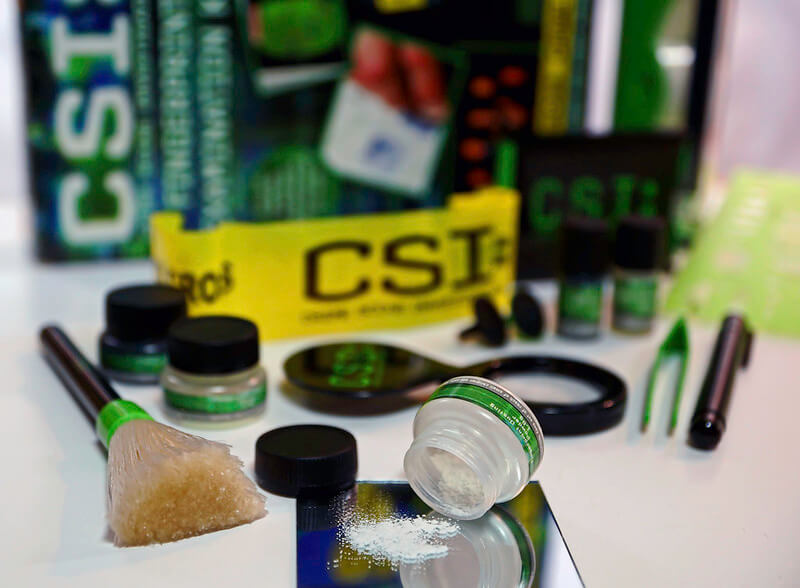
Asbestos has ended up in toys and other products for children, such as crayons, modeling clay and makeup, through the addition of asbestos-contaminated talc.
In 2020 and 2018, asbestos was found in children’s makeup products sold by Claire’s. It was initially found in 2017, when asbestos-contaminated talc was detected in several children’s makeup products sold by retailers Claire’s and Justice.
In December 2018, a report by Reuters News Service revealed internal documents, memos and communications from Johnson & Johnson about asbestos contaminating its talc-based Shower to Shower and baby powder products. The company is facing thousands of asbestos-contaminated talc lawsuits.
In 2015, the Environmental Working Group Action Fund detected asbestos in several brands of crayons and amateur crime lab kits sold in the U.S. In each case, the contaminated product was made with talc and imported from China.
Traces of asbestos have often contaminated talc products. Asbestos naturally occurs near many talc formations, and while companies strive to make their products asbestos-free, there are no federal regulations requiring it.
In March 2020, the U.S. Food and Drug Administration reported it found asbestos-contaminated talc in nine of 52 cosmetic products randomly tested, including a container of Johnson’s Baby Powder. The others included makeup products sold at Claire’s stores or manufactured by City Color Cosmetics.
Many people who developed mesothelioma because of exposure to asbestos-contaminated cosmetics in the past have filed lawsuits against manufacturers to receive asbestos compensation.
The talc used for manufacturing in other countries often contains traces of asbestos. In China, for example, there is still very little awareness of the risks of asbestos exposure, so many companies there have lax standards about asbestos contamination.
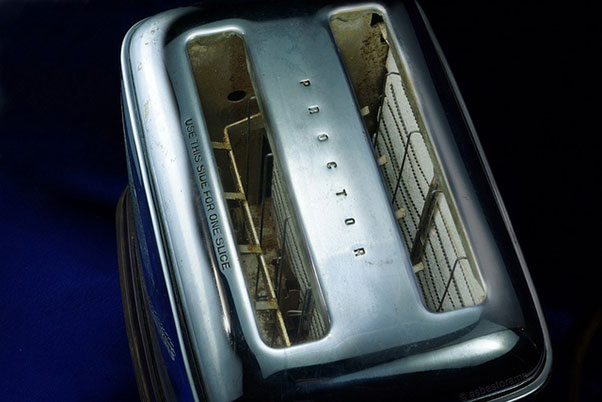
For most of the 20th century, asbestos was a primary component in almost all types of insulation. No device was too big to insulate with asbestos — or too small.
America’s post-World War II prosperity introduced an ever-growing list of gadgets to the modern home. From electric ovens to automatic bottle warmers, many of these new conveniences came lined with asbestos as an insulating and fireproofing material.
Asbestos-containing home appliances included:
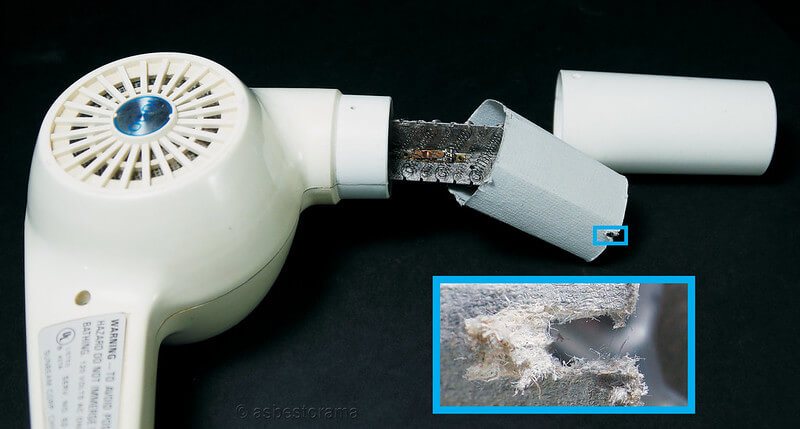
While most home appliances did not present a serious asbestos exposure risk unless they were damaged or taken apart, hair dryers were an unfortunate exception. The asbestos insulation enclosing the heating element was often a soft, friable material that could release asbestos fibers into the heated air stream when the device was turned on.
Friable asbestos was also used in the wire insulation of home appliances. Wear and tear on the wires could cause the insulation to fray, potentially releasing asbestos fibers that could be inhaled or ingested.
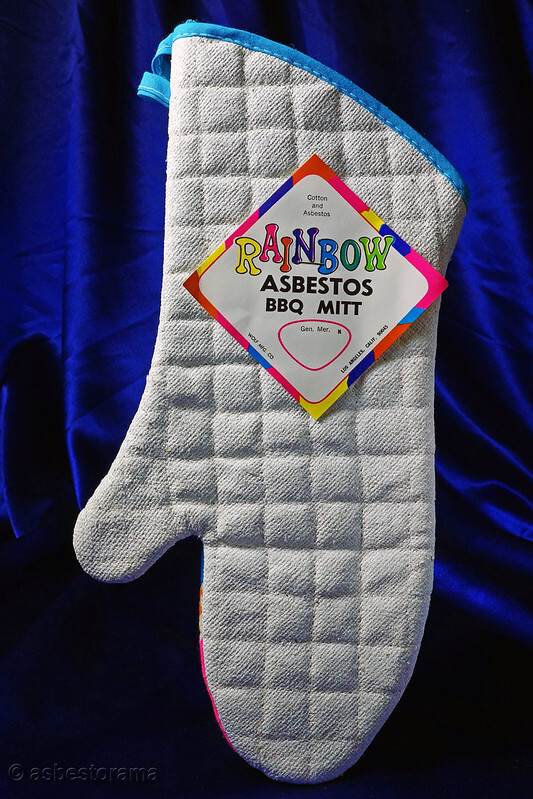
The fibrous structure of asbestos allows it to be woven into fabric. Many brands of wicking for gas ranges and oil lamps contained a high percentage of asbestos, which made the wicks last longer. These soft textiles could easily release asbestos fibers when disturbed.
Finer types of asbestos-containing textiles were used around the kitchen. Some brands of oven mitts, dish towels, potholders and placemats were quilted with a high-percentage asbestos filler. Marketing for asbestos-containing towels claimed superior absorbency. Outside the kitchen, asbestos-containing cloth was commonly used for electric blankets, ironing board covers and fire blankets.
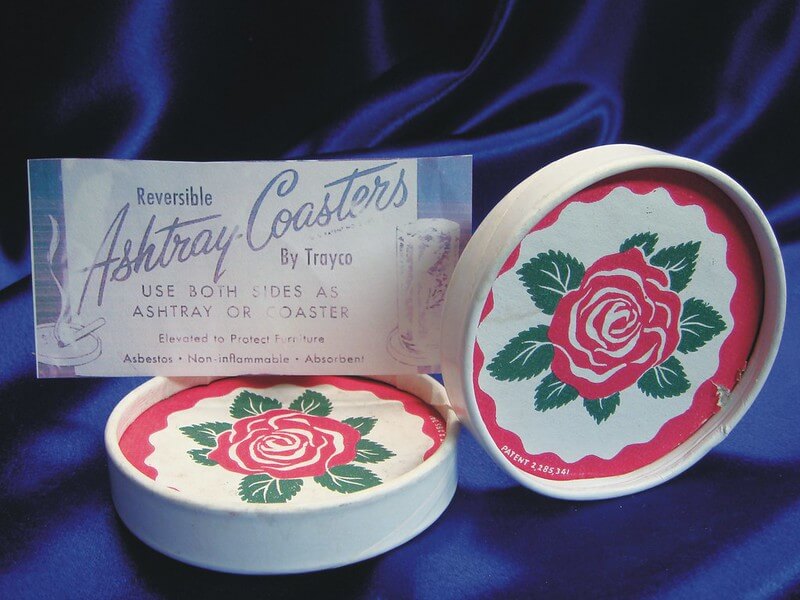
Many manufacturers produced heat-resistant types of millboard by pressing asbestos and other fibrous materials into sturdy sheets. These cheap asbestos millboards were often sold as cooking mats and iron pads. Though they may have provided some protection against burning, the soft material they were made of could easily release hazardous asbestos dust.
Asbestos-containing paper, normally used for flash guards in electrical panels, found its way into certain novelty items as well, such as ashtray coasters.
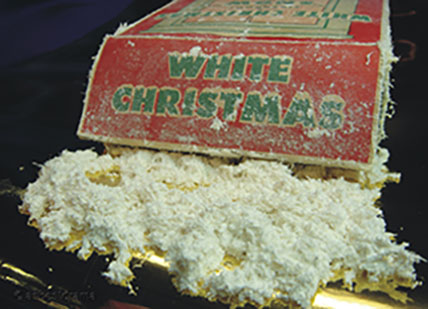
Loose asbestos fibers present the most extreme risk for asbestos exposure and the eventual development of diseases such as asbestosis and mesothelioma. Many people diagnosed with asbestos-related illnesses formerly worked in mines or factories where asbestos was extracted, processed or mixed with other materials.
However, exposure to raw asbestos was not limited to worksites. Fluffed chrysotile — commonly known as white asbestos — was once sold as fake snow for Christmas decorations.
A similar type of processed asbestos was sold in Australia during the 1960s and 1970s as “Mr. Fluffy” insulation. Because the asbestos fibers settled into every crevice of the buildings into which they were blown, the Australian government has found it extremely difficult to abate the asbestos from the affected homes.
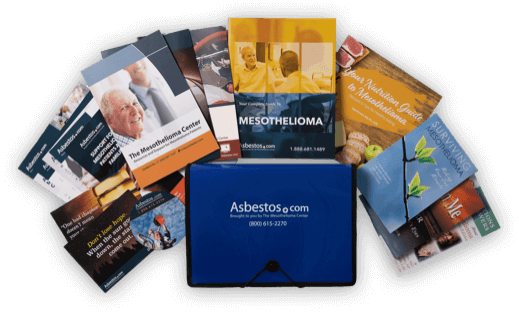

During the peak of asbestos use in the 20th century, there were dozens of companies actively manufacturing asbestos products. Initial uses of asbestos were for industrial purposes, but many manufacturers saw potential in expanding product offerings to consumers.
While many brands knew of health risks from asbestos exposure, they continued to use asbestos in frequently used products found in the home.
Companies that made asbestos-containing consumer goods include:
| Manufacturer | Brand |
|---|---|
| 3M | 3M Dust Masks |
| Fisher Scientific Company | Asbestos Gloves Asbestos Mittens Asbestos Finger Cots |
| Guard-Line Inc. | Asbestos Gloves |
| Proctor | Toaster |
| Ruson-Shield | Bar-B-Que Apron and Mitt Set |
| Steel Grip | Asbestos Gloves |
| Textile Mills | Ironing Board Cover |
| Wolf Manufacturing Co. | Rainbow Asbestos BBQ Mitt |
| Yorkville Craftsman | Hand-Printed Asbestos Mitt |
Exposure to asbestos through household products does not cause illness as often as occupational exposure to asbestos, but the risk remains. In general, it takes repeated exposure to significant amounts of asbestos to become at risk of a developing a related disease.
While this can happen at home, consumers are less likely to get sick than those who work directly with asbestos products for multiple hours a day. An exception includes asbestos-contaminated talcum powder because the asbestos was easily inhaled and the product was more likely to be used daily, resulting in repeated exposure over time.
Asbestos exposure is known to cause the following diseases:
If you believe you were exposed to asbestos through household products you should watch for symptoms such as difficulty breathing, abdominal bloating and fatigue. If you develop any pulmonary or digestive issues that persist or get worse, tell a doctor about your asbestos exposure history. Early diagnosis and treatment of asbestos-related diseases improves survival. It is important to seek treatment from a specialist if you are diagnosed with an asbestos-related disease.
People seeking compensation for asbestos-related diseases as a result of asbestos in household products have filed personal injury and wrongful death lawsuits. Manufacturers are liable for the health conditions their products create because they were aware of the dangers and failed to protect workers or warn consumers.
Many asbestos companies have filed for bankruptcy reorganization under the weight of asbestos litigation. As part of their reorganization plans, companies are required to establish trust funds to compensate future victims. Claimants seeking a settlement may qualify to file claims with multiple asbestos trust funds.
Most asbestos lawsuits related to household products involve talcum powder lawsuits.
An experienced mesothelioma lawyer can review your case and let you know if you qualify to file a lawsuit and whether you are eligible to file multiple claims with trust funds. You may qualify for other forms of compensation such as VA claims, treatment grants and Social Security Disability Insurance.
Get Your Free Mesothelioma Guide

Find a Top Mesothelioma Doctor

Access Help Paying for Treatment

Abatement of consumer goods containing asbestos involves safely handling the product and properly disposing of it according to federal, state and local regulations. Check the guidelines set by your state and county, which will provide guidance on how to bag and dispose of asbestos products.
If you are sure you have an asbestos-contaminated consumer good in your home and it is damaged, friable or crumbling, you should hire a licensed asbestos abatement company to handle and dispose of the product. Handling damaged asbestos products is dangerous and could lead to unnecessary exposure.
If you are unsure if an older product in your home contains asbestos, it is wise to treat it as if it does. If the product is in good condition and not showing any signs of damage, you might be able to safely handle and dispose of it yourself. Wear a high-efficiency particulate air filter mask, goggles, gloves and disposable clothes to handle the product. If handling it generates any dust, gently put the product down and cover it until you can get a licensed professional to take over. Follow local, state and federal guidelines on proper bagging and disposal. Only certain landfills accept asbestos materials and there is often a fee for disposal.
Asbestos ended up in consumer products because it was believed to be a safe material until research in the 1960s confirmed it causes cancer and respiratory diseases. Lawsuits filed in the 1970s began holding asbestos manufacturers liable for the diseases their products caused. Regulations soon followed, and companies began to phase asbestos out of consumer, commercial and industrial products.
Prior to the lawsuits and regulatory steps that followed, asbestos was used in consumer and household goods throughout most of the 20th century, primarily as a fireproofing agent. Asbestos fibers are easy to work with and highly resistant to heat and corrosion. These properties make it a great insulator and fire retardant.
Your web browser is no longer supported by Microsoft. Update your browser for more security, speed and compatibility.
If you are looking for mesothelioma support, please contact our Patient Advocates at (855) 404-4592
